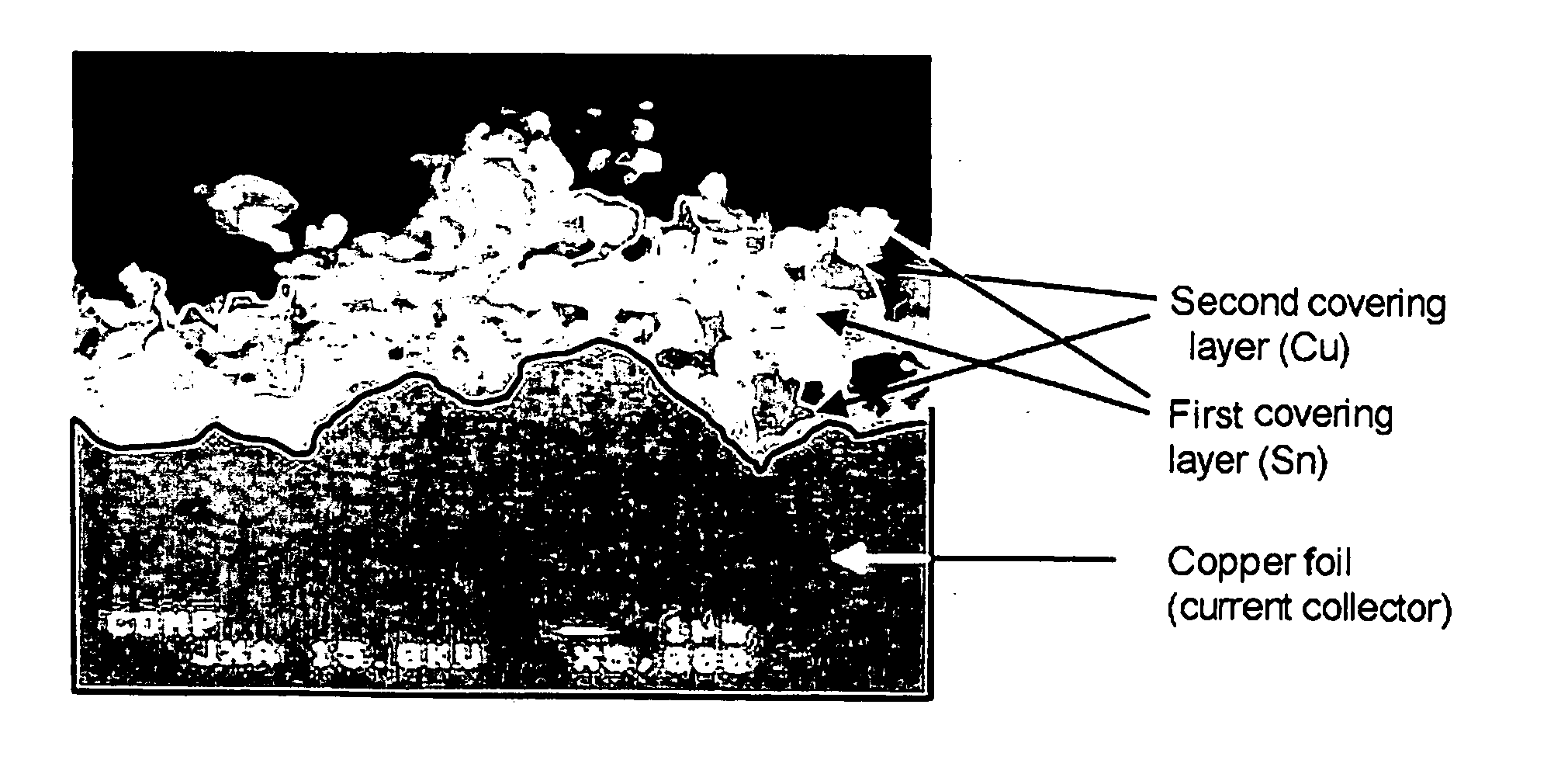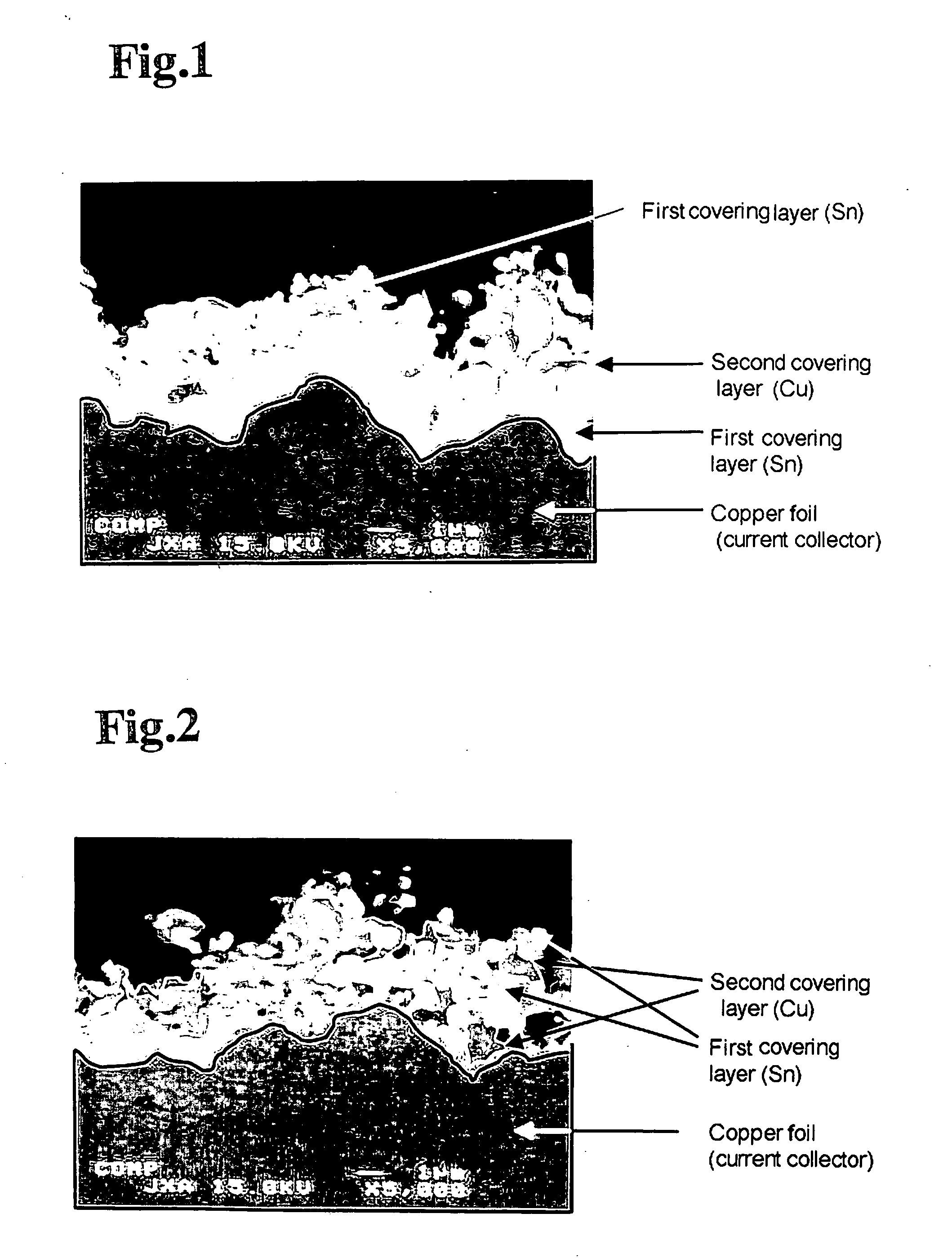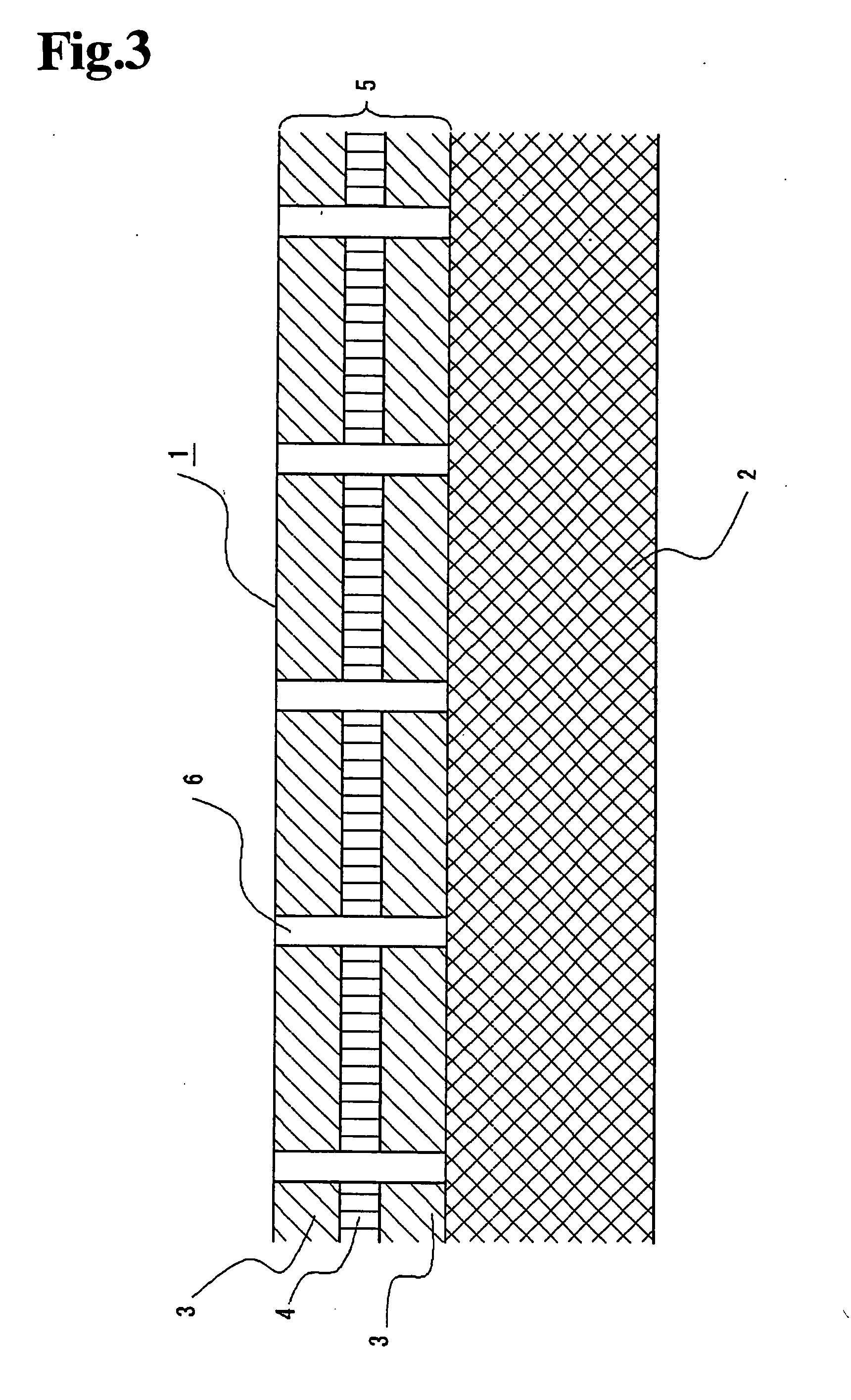Negative electrode for non-aqueous electrolyte secondary cell and method for manufacture thereof, and non-aqueous electrolyte secondary cell
a technology of negative electrodes and secondary cells, which is applied in the manufacture of electrodes, cell components, electrochemical generators, etc., can solve the problems of difficult carbonaceous materials and failure to achieve prolongation of life, and achieve the effect of prolonging the life of the electrod
- Summary
- Abstract
- Description
- Claims
- Application Information
AI Technical Summary
Benefits of technology
Problems solved by technology
Method used
Image
Examples
example 1
[0057] Slits were cut in a 30 μm thick electrolytic copper foil as a current collector in a crosswise pattern at 1 mm intervals. A first covering layer of tin was electrodeposited thereon to a thickness of 2 μm. Subsequently, a second covering layer of copper was electrodeposited on the first covering layer to a thickness of 1 μm. Finally, a first covering layer of tin was electrodeposited thereon to a thickness of 2 μm to form a multilayer cover.
[0058] A tensile force was applied to the resulting composite composed of the current collector and the multilayer cover in outward directions. An anode for a nonaqueous secondary battery was thus prepared, in which the multilayer cover had holes of 0.05 mm in diameter at 0.1 mm intervals.
example 2
[0059] A first covering layer of tin was electrodeposited to a thickness of 2 μm on a 12 μm thick electrolytic copper foil as a current collector. Subsequently, a second covering layer of copper was electrodeposited on the first covering layer to a thickness of 1 μm. Finally, a first covering layer of tin was electrodeposited thereon to a thickness of 2 μm to form a multilayer cover.
[0060] The resulting composite composed of the current collector and the multilayer cover was irradiated with laser light from the multilayer cover side. An anode for a nonaqueous secondary battery was thus prepared, in which the multilayer cover had holes of 0.05 mm in diameter at 0.1 mm intervals.
example 3
[0061] A first covering layer of tin was electrodeposited to a thickness of 2 μm on a 12 μm thick electrolytic copper foil as a current collector. Subsequently, a second covering layer of copper was electrodeposited on the first covering layer to a thickness of 1 μm. Finally, a first covering layer of tin was electrodeposited thereon to a thickness of 2 μm to form a multilayer cover.
[0062] The resulting composite composed of the current collector and the multilayer cover was pierced by pins from the multilayer cover side. An anode for a nonaqueous secondary battery was thus prepared, in which the multilayer cover had holes of 0.5 mm in diameter at 0.1 mm intervals.
PUM
| Property | Measurement | Unit |
|---|---|---|
| diameter | aaaaa | aaaaa |
| diameter | aaaaa | aaaaa |
| thickness | aaaaa | aaaaa |
Abstract
Description
Claims
Application Information
 Login to View More
Login to View More - R&D
- Intellectual Property
- Life Sciences
- Materials
- Tech Scout
- Unparalleled Data Quality
- Higher Quality Content
- 60% Fewer Hallucinations
Browse by: Latest US Patents, China's latest patents, Technical Efficacy Thesaurus, Application Domain, Technology Topic, Popular Technical Reports.
© 2025 PatSnap. All rights reserved.Legal|Privacy policy|Modern Slavery Act Transparency Statement|Sitemap|About US| Contact US: help@patsnap.com



